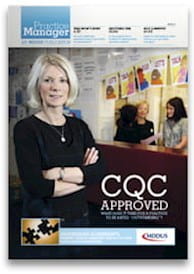Day one
Ms K is a newly registered patient and brings her three-year-old daughter Ruth into the surgery for childhood immunisations. She is seen by both the practice nurse and a healthcare assistant. Both are very concerned about the state of the young girl. Her skin is smudged with dirt and her clothes are stained and smelly. The child is also quiet and unresponsive, and something “seems amiss” between her and her mother. Ms K does not comfort the girl when she becomes upset after her jabs and is rough when putting the child’s coat back on. Both members of staff are uncomfortable about what they have witnessed and report their concerns to the practice manager and one of the GPs. The GP decides to write to the local health visitor to see if they have any background information on Ruth.
Day five
An email response from the health visitor confirms that she last saw Ruth seven months ago and that there were no recorded issues. This presents the practice with a dilemma and it is decided to seek advice from local child services who decide there is sufficient cause for the practice to put its concerns in writing.
Day 14
An officer from child services informs the practice manager that they have spoken to Ms K and her former GP and health visitor and that no further action will be taken. Ms K had explained that at Ruth’s nursery the boys and girls spend much of their time outdoors and parents are encouraged to dress their children in clothes that can get dirty. A phone call to the nursery confirmed that there have been no concerns over Ruth’s home life or welfare.
Day 25
Ms K asks to speak with the practice manager in regard to the report made to child services regarding Ruth. She is very upset that the practice did not contact her first to allow an explanation. She has taken legal advice and states the practice did not follow correct procedure in contacting social services without informing her of this action. In the meeting she asks why the practice staff did not raise their concerns at the time. Ms K admits that Ruth had been fractious that day as she did not want to get her jabs and both of them had been a little “on edge” – but she was devastated when contacted by child services to say she had been reported for suspected neglect. She wonders if it might have something to do with her being a single mother. Ms K is also concerned that the matter will now be recorded in her child’s permanent medical records and she wants all reference to it removed. The practice manager asks how Ms K would like to take her complaint forward and it is agreed the practice will further investigate and respond in writing.
THE practice manager meets again with the staff involved and then drafts a letter of response. This is sent to an MDDUS adviser for review. The letter first expresses regret at Ms K’s distress and acknowledges that child services now consider the concerns over Ruth’s welfare are unfounded. She states that on reviewing the circumstances the practice still feels it acted appropriately in referring the matter but in hindsight should have informed Ms K of its actions. The PM also denies the decision had anything to do with Ms K being a single mother.
In response the practice states it will review its procedures and ensure that parents or care givers are routinely informed of any child welfare concerns and the intention to refer the matter to child services (unless doing so would increase the risk of harm to the child). In regard to the request to remove entries in the patient records the PM states that it cannot retrospectively alter medical details unless factually incorrect but that it would be possible for Ms K to review the records to check for inaccuracies in the entry. The PM or mother would also be allowed to annotate the entries.
The PM offers to arrange a further meeting involving other practice staff if this is wished. The letter also states that if Ms K is not satisfied with this response she has the right to take her complaint to the ombudsman and an address is provided.
KEY POINTS
- Healthcare professionals have a duty to act on any concerns they have about the safety or welfare of a child or young person.
- You do not need to be certain that the child is at risk of significant harm in order to inform an appropriate authority.
- Conduct a full investigation before coming to any conclusions over a perceived breach.
- Inform children and their parents when you have concerns about abuse or neglect and how you will act on these concerns (unless doing so may put the child or anyone else at risk of harm).
- Patients have the right to check medical records and request that inaccuracies are corrected.
This page was correct at the time of publication. Any guidance is intended as general guidance for members only. If you are a member and need specific advice relating to your own circumstances, please contact one of our advisers.
Read more from this issue of Practice Manager

Save this article
Save this article to a list of favourite articles which members can access in their account.
Save to library
